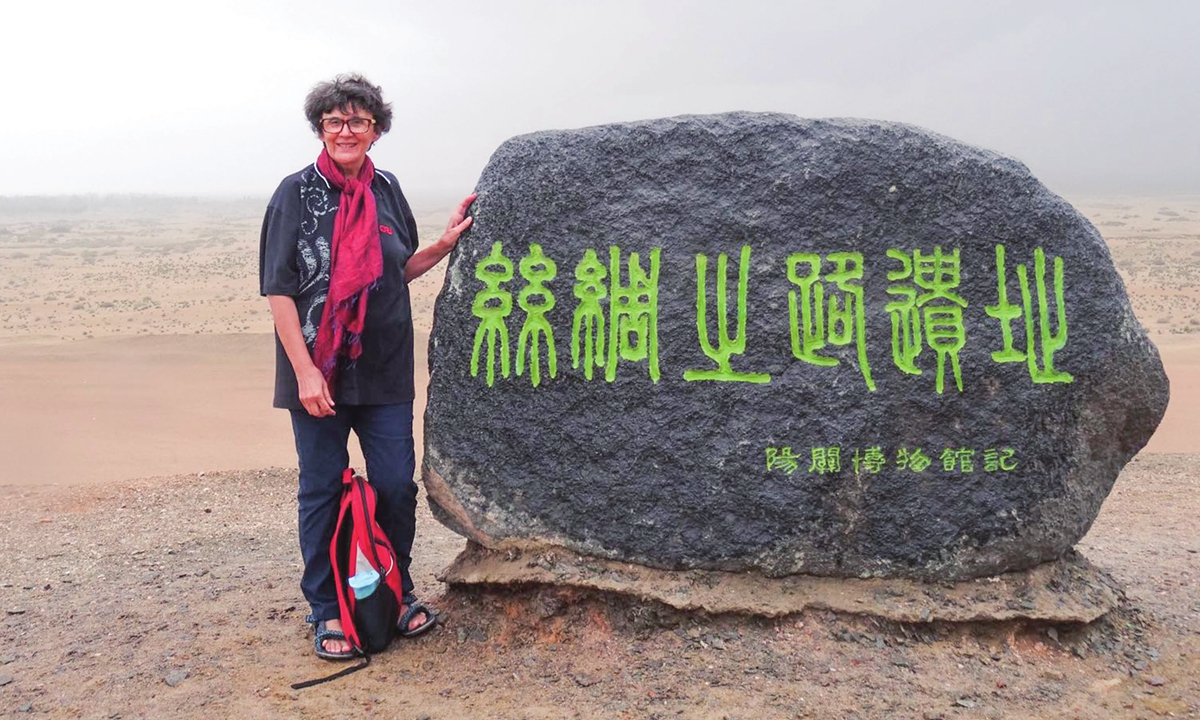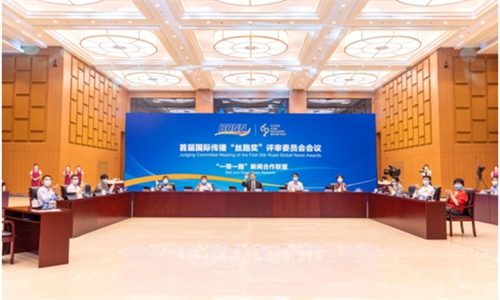Italian sinologist calls upon real experiences to inform her countrymen about China
A modern Marco Polo

Italian sinologist Gabriella Bonino Photo: Courtesy of Gabriella Bonino
During the 13th century in the Yuan Dynasty (1279-1368 ), Venetian merchant and explorer Marco Polo traveled his way to the East through the ancient Silk Road and settled in Yangzhou, East China's Jiangsu Province, where he became a local official.
Eight-hundred years later, another sinologist chose to travel from northern Italy to eastern China to experience and study the culture she loves. Living in China for 35 years, Gabriella Bonino, or Tang Yun as she calls herself in Chinese, considers herself the "Marco Polo of a new era."
"My goal is to give Italians a complete understanding of China. Italy is an ancient civilization and so is China. However, as far as I see, Italy's understanding toward China is still above the surface of the water where a deep, comprehensive and complete understanding is quite rare," the Turin-born sinologist told the Global Times.
Forming a strong bond
Bonino first came to China in 1987 after receiving a scholarship from a Chinese university. Later that same year, she continued her studies at Beijing Language and Culture University and has lived in the Chinese capital ever since.
In addition to her work as a host on television, which she has done for the past 20 years, Bonino spends most of her time studying Chinese history and classics such as the mystical story collection Strange Tales from a Chinese Studio and The Analects of Confucius to better understand Chinese culture and society.
The Italian sinologist's connection with China started long before she arrived in the country.
From Latin to ancient Greek, Bonino has always had a deep love for ancient languages, which eventually led her to take an interest in Chinese. Bonino told the Global Times that she chose her Chinese name from one of her favorite classic works - The Three Hundred Tang Poems, an anthology of poems from the Tang Dynasty (618-907).
"My name 'Yun' means clouds, which derived from my favorite poem from Li Bai, 'Setting Off Early from Baidi City.' The verse goes: At daybreak I left Baidi, in the midst of clouds aglow; a thousand miles to Jiangling, takes just a day to go," she said.
While a student, Bonino once went to Paris for a holiday. Visiting a local museum, she was completely captured by the beauty of the Chinese porcelains on display.
From this encounter, her curiosity for China only increased, eventually leading to her to apply to study in the country.
Working in the media in Beijing, Bonino has been fascinated by the things she has experienced while running through the alleys and streets in China's major cities and rural countryside, standing witness to the rapid changes that China has been through after the reform and opening-up in 1978.
In Wenzhou, East China's Zhejiang, the pioneering area of the reform and opening-up policy, Bonino met with Zhang Huamei, a 19-year-old young woman who received the country's first-ever business license for a private industrial and commercial household since the policy was announced. In the countryside, Bonino rose the latest in public transportation, as infrastructure improvement helped alleviate poverty in impoverished areas.
In order to dispel prejudice and present the real China she saw with her own eyes every day, she compiled her real experiences following China's social and economic developments and people's lives into the Chinese-Italian bilingual book The Chinese Journal of Contemporary Female Marco Polo, which was published in 2010.

A man makes sumian, local traditional noodles listed as an intangible cultural heritage, in Rui'an, Zhejiang Province. Photo: VCG
Focus on cultural heritage"You know, although I began to learn about Chinese culture while I was a student, my understanding of China when living in Europe was completely different from the real experiences I have had living and working in China," Bonino noted.
As two representatives of ancient civilizations of the East and the West, China and Italy were first connected through the Silk Road hundreds of years ago. In recent years, cooperation between the two sides in areas such as culture has been deepening. However, the question of how to give people in Italy a full picture of China still troubled Bonino. Fortunately, she set her eyes in a new area about two years ago: intangible cultural heritage.
The small town she set foot in is Rui'an in Zhejiang Province. The 1,700-year-old village is small yet boasts more than a hundred precious cultural heritages, ranging from cuisines to handicrafts, that are still being used by local people today.
"Intangible cultural heritage is the closest thing to people in a place. It is something that people approach every day in local areas and is indispensable. It preserves the feelings and memories of local people," Bonino said.
From Song Dynasty (960-1279) lacquer wares to wood block movable printing; from the stringed music instrument guqin in Zhejiang Province to local marionette plays, Bonino has visited dozens of intangible inheritors over the past two years. She published what she learned in Italy earlier in 2022 in the 100,000 word book 64 Rui'an Intangible Cultural Heritages.
Earlier in 2016, Bonino published an Italian language book on the Belt and Road Initiative in which she detailed the impact the initiative has had on the development of China.
"Experts and scholars in various fields have been looking forward to participating in [the Initiative] some way, including myself, a cultural scholar," said Bonino, commenting on this international platform while introducing her next book, which will focus on the Maritime Silk Road.



